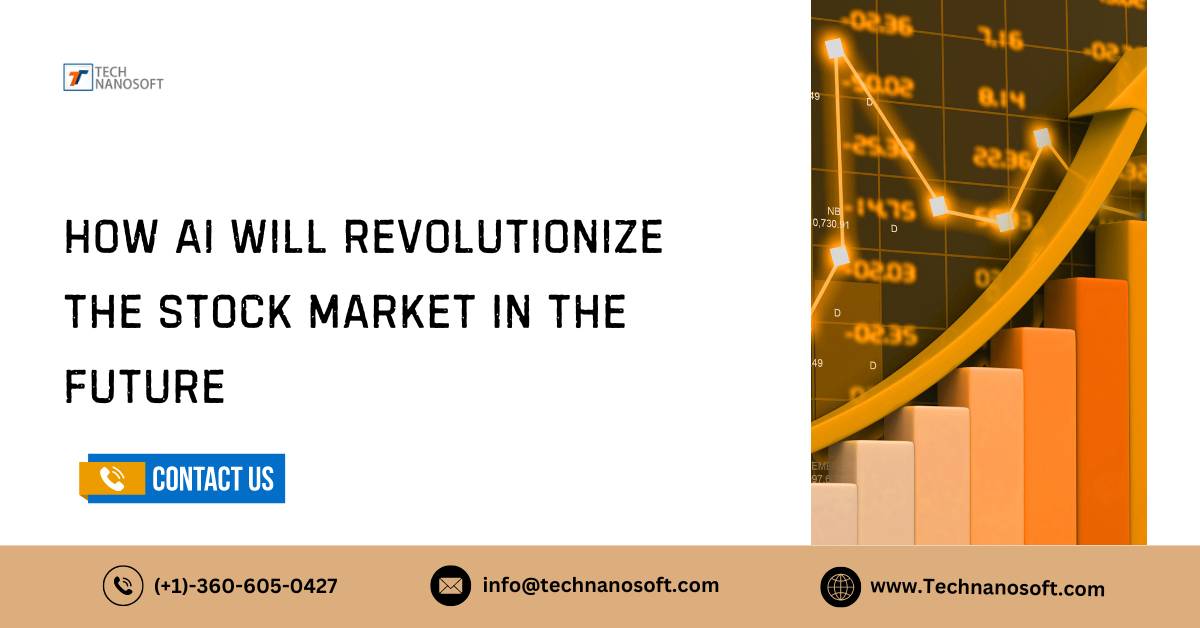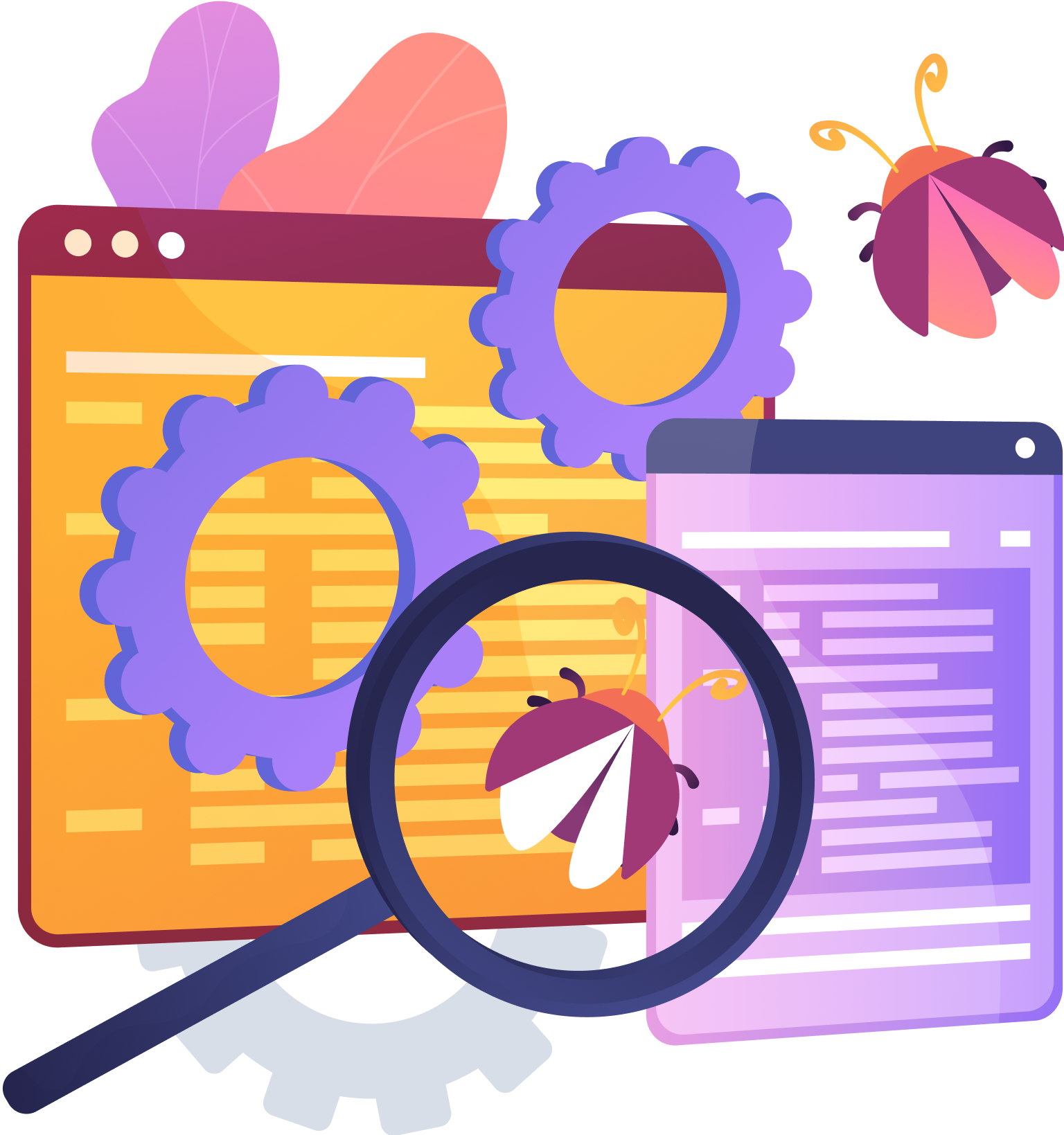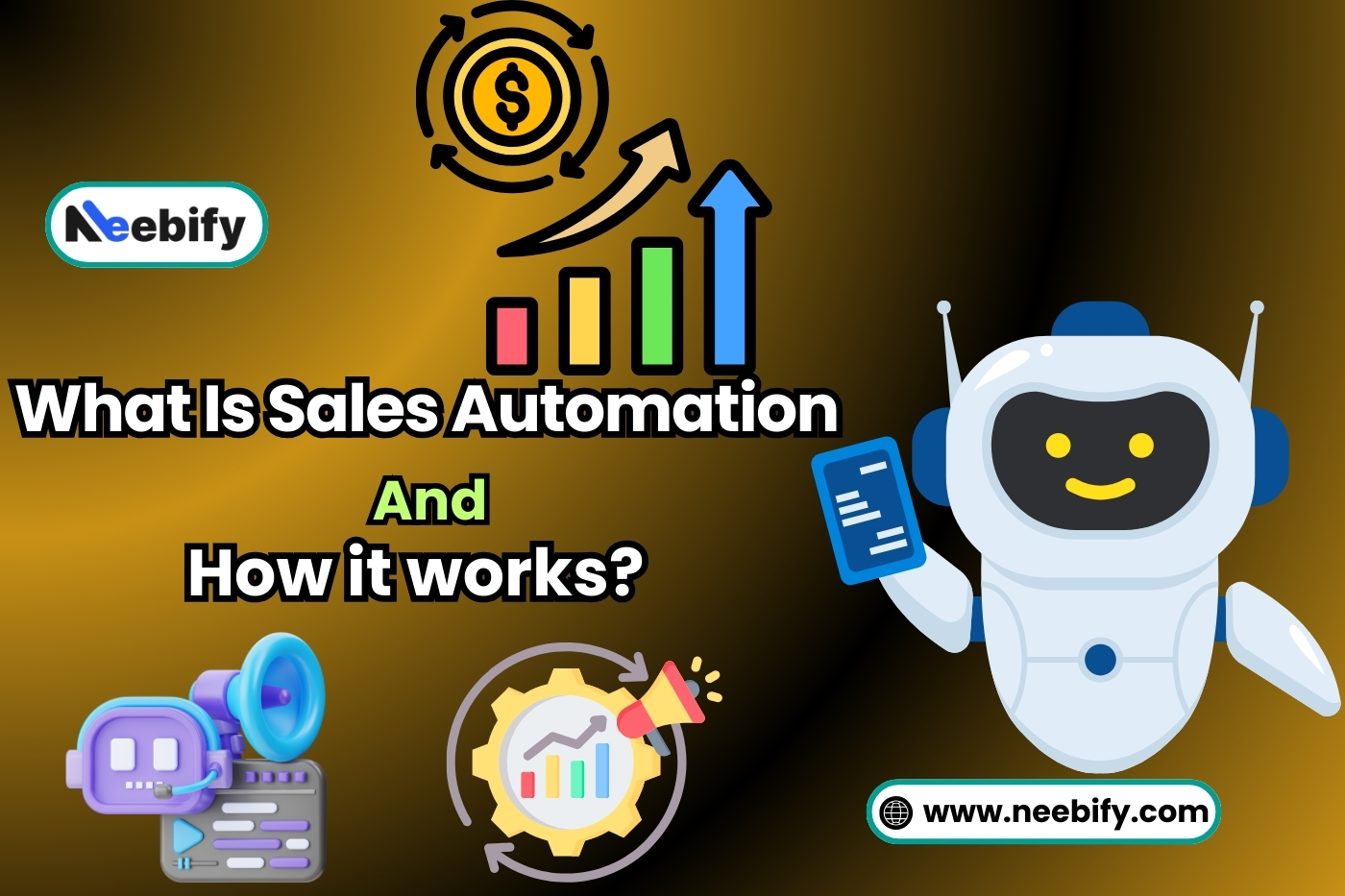How AI Will Revolutionize The Stock Market In The Future

Artificial intelligence (AI) marks a big step toward making decisions automatically and based on data in the stock market. AI systems can quickly process and study huge amounts of data, such as changes in prices, financial news, and signs of the health of the world economy.
This feature helps traders make faster and better choices, which is very important in a world where milliseconds can mean the difference between making money and losing it. With the help of AI, predictive analytics can find patterns and trends that aren't always clear. This gives traders a practical edge.
The Best AI Indicators for Trading
1. Machine Learning
One of the best ways to predict market trends and possible price changes is to use machine learning techniques. These models can find patterns and connections that human analysts might miss by looking at huge amounts of historical data. Machine learning for investment algorithms are very good at predicting what will happen in the market in the future by using data from past stock prices, trade volumes, and many other financial factors.
Because they can change and learn from new information, they can keep improving their guesses, which gives traders useful information about how prices might change and how the market works.
Supervised Learning Models When it comes to machine learning, supervised learning models are the best at figuring out what will happen next by looking at patterns from the past. Large amounts of historical data, such as stock prices, trade volumes, and other financial indicators, have trained these models to identify trends and make accurate predictions.
Using the huge amount of information in past data, supervised learning models can very accurately predict how prices will move in the future. Because they can learn from labeled data, they can find subtle trends and correlations, which helps traders make smart choices when the market is volatile.
Unsupervised Learning Models These models are a unique way to look at market data because they find hidden structures and trends without the need for predefined categories. These models look very deeply into large, complicated datasets, trying to find connections and traits that aren't obvious at first glance. Unsupervised learning models can divide stocks into different groups by looking at things like price changes and volatility.
This gives managers of portfolios useful information for reducing risk and increasing returns. They are essential tools for traders who want to get ahead in the financial markets because they can spot new trends and changes in the market.
2. Tools for Sentiment Analysis
AI stock market analysis has become an important tool for traders and buyers who want to understand how people feel about the market and make smart choices. These tools use advanced natural language processing (NLP) methods to look at a lot of textual data from news stories, social media posts, financial sites, and other places to figure out how the market is feeling at the moment.
Positive Sentiment Indicators Positive sentiment indicators are very important for finding good times to spend. These indicators show when news stories, social media posts, or other textual data show that people are optimistic about company or the market as a whole. Positive feelings may indicate that the market is doing well, which means that now might be a good time to buy a stock or trade in the market. Traders can take advantage of bullish trends and possibly make the most money by spotting positive feelings early on.
Negative Sentiment Indicators On the other hand, negative sentiment measures tell us a lot about the risks and problems that the market might face. When a negative mood is common in news stories, social media posts, or other text-based data sources, it could mean that certain stocks or the market as a whole are about to go down or that conditions are not going to be good.
In these situations, investors might think about using defensive tactics to lower their risk of losing money, like selling off assets or shorting certain companies. By using indicators of negative sentiment, traders can stay ahead of market downturns and make changes to their AI investment strategies plans to protect their portfolios.
3. Neural Systems
Neural systems, especially deep learning models that are driven by neural networks, are a cutting-edge way to predict and analyze data. These complex models are very good at finding complex links and trends in very large datasets. This makes them very useful for many different tasks.
Convolutional Neural Networks (CNNs) CNNs are well known for how well they work at recognizing images. They are also very useful for looking for visual trends in datasets that aren't images, like stock market price charts and graphs. CNNs are very good at finding complex patterns and trends in multidimensional data because they use convolutional layers to pull out features and hierarchical structures.
Financial analysts can use CNNs to identify significant patterns in stock market data. This helps traders and analysts make decisions and predict what the market will do.
Long Short-Term Memory (LSTM) Networks and Recurrent Neural Networks (RNNs) LSTM networks and RNNs are great at looking at time-series data, which makes them very useful for guessing what values will be in the future by looking at how they have been in the past. LSTM networks and RNNs are great at modeling sequential patterns and trends because they can pick up on both short-term and long-term relationships in data.
When looking at the stock market, these neural architectures can look at how prices have changed over time and find trends that might affect how much stocks will be worth in the future. LSTM networks and RNNs help traders and investors make smarter choices and more accurate predictions about market trends by using the rich temporal information stored in time-series data.
4. Developmental Algorithms
Developmental algorithms alter the way traders use trading techniques by mimicking the process of evolution to make trades more profitable. By simulating natural selection, these algorithms are always improving trade strategies by changing parameters over and over to get the best results and adapt to changing market conditions.
Genetic Algorithms Genetic algorithms use the ideas behind natural selection to come up with trading plans that make the most money. At first, they look at a wide range of possible answers that represent various trading strategies. Genetic algorithms look at how well each answer works and choose the ones that give the highest returns over and over again.
Genetic algorithms improve trading strategies over time to adapt to changing market conditions by combining strategies that work and adding new ones. Over time, they move toward ways that work better and better, using the power of evolutionary optimization to get around complex trading environments and do better.
5. Blended Models
Blended models combine many different ai investing methods, utilizing the best aspects of each to enhance the accuracy of trading predictions and decisions. By combining different methods that work well together, these mixed models provide a more complete look at the market, using a range of viewpoints and data to make more accurate predictions.
As an example, a blended model might use both sentiment analysis and neural networks to make better price estimates based on how people feel about the market. Sentiment analysis looks at text from news sources, social media, and financial sites to get useful information about how people feel about the market.
It helps traders figure out how investors feel and how the market is feeling. On the other hand, neural networks are very good at finding complicated patterns and connections in data. This lets them make more accurate predictions about how prices will change and how the market will move.
AI Stock Trading vs. Human Trading
AI Stock Trading
AI stock trading is useful because it has strong computing power. Because they can quickly look at large datasets, artificial intelligence (AI) algorithms can find complex patterns and finish transactions in milliseconds.
This speed is necessary to take advantage of market chances that disappear too fast for people to notice. AI trading systems can operate continuously and remain immune to emotional biases. This gives them a big edge in markets that never sleep.
AI systems often need a lot of data and technology to work, and they might not be as aware of their surroundings as human dealers. However, their algorithmic decisions are quick. Because AI relies on past data, it may not be able to handle unusual events where past trends don't provide much information.
Human Trading
Human trading is known for its brain adaptability and speed. Human traders excel at identifying minute details and considering a wealth of intangible information, such as shifts in market sentiment or novel regulations. When dealing with difficult situations, they know how to use their knowledge and intuition to make good decisions and how to invest in perplexity ai.
Unlike ai stock trading bot, people can't process information as quickly or in large amounts. They're also limited by their emotional responses, which can lead them to draw the wrong conclusions.
A good trade plan often uses both human oversight and artificial intelligence to work together. While AI can manage routine tasks such as transactions and data analysis, human intervention is still necessary for strategic direction, oversight, and appropriate influence. By using ai investing speed, this mixed approach tries to find a middle ground between cold math and human judgment.
A good trade plan often uses both human oversight and artificial intelligence to work together. While AI can manage routine tasks such as transactions and data analysis, people remain essential for strategic direction, oversight, and appropriate influence. This mixed approach tries to find a middle ground between how people make decisions and how machines do calculations. It also relies on AI's efficiency and people's judgment.
How AI is Transforming Stock Trading
Artificial intelligence (AI) development has significantly transformed stock trading, enabling unprecedented levels of accuracy, efficiency, and sophistication. AI-driven technologies have changed the way financial markets work, giving traders and buyers access to automated trading systems and advanced analytical tools that were previously unimaginable.
Advanced Reasoning Skills
AI-driven analysis transforms stock dealing by leveraging complex algorithms to extract valuable insights from vast and intricate datasets. AI algorithms can find subtle signals and warning signs in market data that human experts might miss by looking closely at complex patterns, trends, and correlations. AI lets traders make smart choices based on data-driven intelligence through advanced techniques like machine learning and natural language processing. This makes their trading strategies more accurate and effective.
Automated Trading Systems
Automated trading systems driven by AI investingare a game-changing innovation in stock trading that can make trades faster, more accurately, and more efficiently than ever before. These systems utilize AI algorithms to analyze the market in real time, identify profitable opportunities, and execute trades autonomously, without requiring human intervention.
Using cutting-edge technologies like algorithmic trading and high-frequency trading, AI-driven automatic trading systems can take advantage of short-lived market trends and arbitrage opportunities at speeds that are much faster than humans can do them. This cuts down on deal execution latency and also lets traders take advantage of market inefficiencies and make their trading strategies work better so they can make the most money.
AI Stock Trading Mechanics
Market Assessment
AI algorithms carefully examine a wealth of market data, including stock prices, trade volumes, economic indicators, and news sentiment. By finding patterns and trends in this data, AI systems learn a lot about how markets work and can spot possible risks and opportunities.
AI-driven market evaluation processes use cutting-edge algorithms to sift through massive datasets, such as stock prices, trade volumes, economic metrics, and mood analysis from news sources. These programs carefully look for patterns and trends in this data, which lets AI systems learn important things about how markets work.
AI makes it easier to find profitable opportunities and possible risks by looking at the market as a whole. This gives traders the information they need to make smart choices. This methodical approach improves trading techniques by helping to make the most money and limit losses in volatile market conditions.
Forecast Generation
AI models use machine learning to predict how markets will move in the future by looking at past data and current information. Traders can use these predictions to help them make smart choices and make the most of their trading strategies so they can take advantage of new trends and opportunities.
AI-driven forecast generation uses advanced machine learning techniques to examine vast amounts of historical data and real-time market data. AI models use complex algorithms to extrapolate patterns and trends from this data in order to make accurate predictions about how the market will move in the future.
Traders can learn a lot from these forecasts, which give them useful information they can use to improve their trading strategies and take advantage of new chances. Traders can accurately predict market trends by using AI-generated forecasts. This helps them make better decisions and make the most money in volatile trading settings.
Trade Execution
AI-run trading systems can quickly and effectively make deals based on set criteria and market conditions. Using complex algorithms and automation, these systems can make deals quickly and accurately, with as little delay as possible and as much profit as possible.
AI-driven trade execution platforms use cutting-edge algorithms and automation to ensure smooth trades based on set parameters and current market conditions. These systems work very quickly and accurately, making trades quick to take advantage of good market moves while minimizing latency and increasing profits. Traders can streamline their processes and minimize errors by utilizing AI-powered trade execution systems. This improves overall performance and ensures the best results in fast-paced trading settings.
Dynamic Strategy Adjustment
One of the best things about AI stock dealing is that it can change and adapt right away. These systems continuously monitor market trends, learn from previous trades, and adjust trading methods to achieve optimal results and minimize risks. AI trading systems make sure that trading strategies are flexible and adaptable by keeping alert to changes in the market.
AI-powered trading systems are great at changing their strategies on the fly. They do this by constantly watching market trends and using advanced learning algorithms to improve trading strategies in real time. Using information from past trades, these systems are able to learn useful lessons and make smart changes to trading methods, which improves performance and lowers risks.
AI trading systems make sure that markets are resilient and adaptable by staying flexible and responsive to changing conditions. This gives traders the confidence to handle volatile markets. This flexible method gives you a competitive edge and makes it easier to make money and grow in the ever-changing world of stock trading.
READ ALSO- How is AI in sports changing the industry? applications and use cases?
AI Shortcomings in Stock Trading
High Development Costs
Building complex algorithms and maintaining robust infrastructure require significant financial investment for the use of AI-driven solutions in stock dealing. These costs can make it hard for smaller businesses and individual traders to use cutting-edge trading technologies and tactics. These kinds of investments are necessary to stay competitive in markets that are always changing.
In these markets, AI-powered insights can help traders make better choices. To get around the cost, though, you need to carefully plan your strategy and think about the long-term benefits AI can bring to portfolio management and risk reduction.
Risk of Overfitting
Using AI for stock trading carries a significant risk of overfitting. This is when models become overly tuned to past data and pick up noise instead of real market trends. This issue renders AI-driven strategies less dependable, as it results in inaccurate predictions and subpar performance when applied to yet-to-be-viewed data. In order to lower this risk, traders need to use strict validation methods and model review techniques.
Also, AI algorithms need to be constantly checked and tweaked to make sure they can adapt to changing market conditions and maintain their accuracy and dependability over time.
Black-Box Algorithms
When it comes to trading stocks, the use of "black box" computers is problematic because their decision-making processes are not clear to humans. This lack of openness makes people worry about who is responsible and how much they can trust trading choices made by AI. Without understanding the reasoning behind AI-driven suggestions, traders may not be able to successfully test or change their strategies.
To solve this problem, there is a growing need for AI Artificial intelligence in finance models that are easier to understand and give clear reasons for their choices. This would boost trader trust and allow for better, more reliable trading strategies.
With AI programs driving high-frequency trading, flash crashes are more likely to occur in the financial markets. Automated trading systems can fill numerous orders in milliseconds, leading to sudden and severe market drops. These kinds of things put the market and participants' investments at great risk, which is why we need strong risk management measures.
While AI-driven trading systems aim to enhance speed and efficiency, they also have the potential to destabilize the market and trigger rapid price fluctuations. We need to closely monitor and regulate them to prevent negative outcomes.
conclusion
AI-driven stock trading has a lot of great benefits, like automation, speed, and the chance to make better decisions. But it also comes with a lot of big problems and risks. To get the most out of AI technologies in stock trading, traders have to deal with a lot of problems. These include high development costs, the risk of overfitting, and worries about how clear the decision-making process is.
It is very important to lower risks by using strong validation methods, constant monitoring, and following best practices. In the end, using AI in stock trading needs to be done in a balanced way that uses technology while still relying on human control and knowledge to handle changing market conditions well.
FAQs about AI Investing
Q.1- What is Investing with AI technology?
A- AI-driven stock trading refers to the use of AI technologies, such as machine learning algorithms, to analyze market data, identify patterns, and automatically make trade decisions. By using advanced computing methods, these systems try to make dealing faster, more accurate, and more profitable.
Q.2- How does AI-based stock trading work?
A- AI-based stock trading systems look at a lot of real-time and past market data to find patterns, trends, and outliers. With this knowledge, they make buy or sell signals and trade on their own. These systems can change and get better over time thanks to machine learning programs that let them learn from past trades and changes in the market.
Q.3- What are the benefits of AI-driven stock trading?
A- A lot of good things come from AI-driven stock trading, like faster and smarter decision-making, better risk management, and the ability to find profitable trading opportunities in tough market circumstances. Also, these systems can work around the clock without any help from a person, so traders can take advantage of changes in the market at any time.
Q.4- What are the potential risks involved in AI-based stock trading?
A- One of the risks involved in AI-based stock trading is the possibility of overfitting. This occurs when models rely too heavily on past data and may generate inaccurate predictions for new data. In AI trading systems, the lack of transparency in black-box algorithms can pose a challenge for traders who want to understand and validate the reasoning behind trading decisions.
Q.5- What strategies can traders employ to minimize risks in AI-driven stock trading?
A- Implementing rigorous validation and testing processes can help traders mitigate risks in AI-driven stock trading and ensure the reliability and accuracy of AI models. Utilizing a wide range of datasets, regularly assessing model performance, and implementing risk management strategies are all essential components of a well-rounded approach.
Q.6- Are AI-driven stock trading ai appropriate for all traders?
A- Although AI-driven stock trading systems have their benefits, they may not be the right fit for every trader. Smaller firms and individual traders may encounter difficulties because of the significant expenses and specialized knowledge needed to establish and sustain AI systems. In addition, it's important to consider regulatory factors and the potential impact of market volatility on the suitability of AI-based trading strategies for various market participants.
Q.7- Where can I find additional resources on AI-driven stock trading?
A- There are plenty of resources out there to help you expand your knowledge of AI-driven stock trading. These include online courses, research papers, and industry conferences. Furthermore, seeking advice from financial professionals and experts in the field can offer valuable insights and guidance on incorporating AI strategies into stock trading.









